Hyundai Tucson 2022
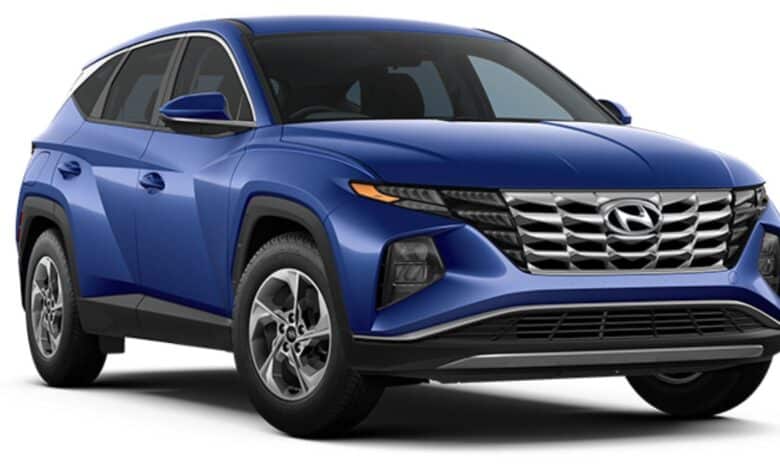
The 2022 Hyundai Tucson’s unique LED headlamp arrays provide the first indication of how radically it has been modified. These lights, shared with its pickup truck sibling, the Santa Cruz, can be seen for miles and signal a significantly modernized vehicle. The all-new fourth-generation Tucson has precisely targeted the competition after years of chasing after the Toyota RAV4 and Honda CR-V, establishing itself as one of the most excellent small crossovers available.
Hyundai’s “parametric dynamics” design language has a strong visual presence, making the 2022 Tucson seem considerably longer than its 182.3-inch length. However, the exterior also conceals a roomy and comfortable cabin with plenty of luggage area and class-leading back legroom comparable to that of many bigger SUVs. A standard 2.5-litre four-cylinder driven by gas is now one of three available powertrains, along with conventional and plug-in hybrids. All-wheel drive (AWD) is standard on hybrid models, and they also have an extra 1.3 inches of ground clearance.
While the RAV4, Ford Escape, and the 2023 Kia Sportage, Tucson’s Korean cousin, offer comparable options, few of its competitors cover all the bases. The Mazda CX-5 and the Volkswagen Tiguan lack a hybrid, while a CX-50 hybrid is in the pipeline. The Mazda CX-5 is sportier and has a unique semi-premium appearance. Honda’s CR-V has a conventional hybrid option but not a plug-in hybrid, and the CR-V hybrid’s batteries take up some of the vehicle’s luggage capacity.
Hyundai has introduced performance and off-road-themed trims, the N-Line and XRT, and the sporty new aesthetics; however, unlike the Kona N, they are only cosmetic packages. Tucson is not very thrilling, and its standard engine is inadequate, although it handles well and provides a quiet, smooth-riding driving experience. However, the hybrid and plug-in electric vehicle variants have higher power and far better fuel efficiency. The PHEV has less luggage space and costs much more, but it also qualifies for federal tax advantages.
The Tucson makes up for any lack of flair with space, amenities, and pricing. With enough capacity for kid seats, a family of four could quickly go on vacation for a week. When properly outfitted, the Tucson can pull a 2,000-pound trailer, and the roof rails can support up to 220 pounds of cargo. While hybrids can get up to 38 mpg (though our test vehicle achieved higher than that), AWD variants are also quite capable of modest off-road driving.
The higher trims provide a wide range of tech features, extra comforts, and complete sets of active safety equipment, so we’d avoid the basic SE model. The most luxurious features, like Hyundai’s Highway Driving Assist, are only available on the more expensive Limited trims. However, most Tucson are still reasonably priced, all with the manufacturer’s extensive warranty. With all these advantages, small crossover buyers should strongly consider Tucson.
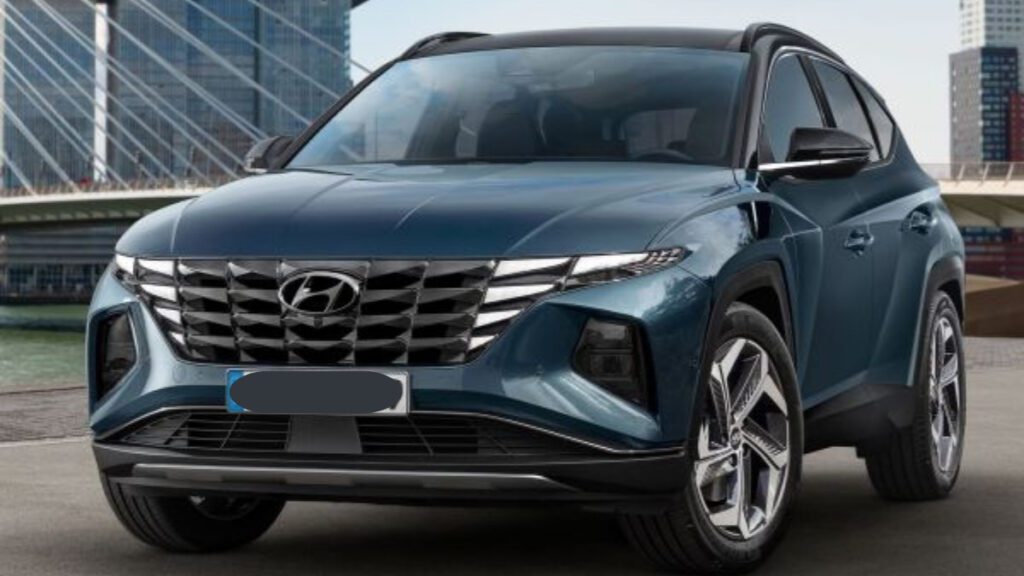
What’s New
- For 2022, Hyundai completely reimagines the Tucson, which now measures 6 inches larger in length and adopts the company’s “parametric dynamics” design language.
- Today’s market has traditional hybrids, plug-in hybrids, and regular internal combustion engine vehicles.
- Although the sporty N-Line and robust XRT variants are new, they are primarily cosmetic.
- There are now more standard active safety measures than ever, with even more optional.
Performance: Hyundai Tucson
Front-wheel drive is standard on non-hybrid Tucson, while all-wheel drive is an additional $1,500. These models are powered by a 2.5-litre four-cylinder engine with an eight-speed automatic gearbox, producing 187 horsepower and 178 pound-feet of torque. The hybrids achieve better fuel economy than the 2.5, which is not sluggish but yet not very speedy.
The Tucson Hybrid’s 1.6-litre, 180-horsepower turbocharged four-cylinder generates 226 system horsepower and 258 pound-feet of torque coupled with a 44.2 kW electric motor. The hybrid has a six-speed automatic transmission and a compact 1.49 kWh battery pack, enabling it to run only on electric power for short distances at low speeds. This mode offers 59 horsepower and 195 pound-feet of torque.
A bigger battery pack (13.8 kWh) and electric motor (66.9 kW) provide the PHEV Tucson, which also employs the 1.6L engine, 261 total horsepower and 258 pound-feet of torque. It only has 90 horsepower and 224 pound-feet of torque in EV mode, but it can go around 33 miles on pure electricity.
Although none of the Tucson is as sporty-looking as they seem, most drivers won’t care. This is a calm, quiet car that prioritizes comfortable passenger transportation. The Mazda CX-5 is more engaging, and the AWD models aren’t as strict as cars like the Subaru Forester Wilderness, but it handles well and is calm on bad pavement.
Fuel efficiency: Hyundai Tucson
The EPA estimates that a 2.5-litre Tucson gets 26 mpg with all-wheel drive and 29 mpg with front-wheel drive. That compares well to the Mazda CX-5 but is between one and two mpg less than the non-hybrid CR-V and RAV4.
The EPA rates the Tucson Hybrid Blue at 38 combined mpg, while the regular hybrid is at 37. However, during our weeklong evaluation of a Tucson hybrid, which was primarily urban driving, we saw a highly unexpected 42 combined mpg. Although we anticipate that most owners will get somewhat less mileage from their hybrids, the EPA’s estimates are just 2 to 3 mpg below the RAV4 hybrid and on par with the CR-V hybrid.
The Tucson plug-in hybrid performs less well, getting 35 mpg combined in town and 80 MPGe on electricity, with a maximum range of 33 miles. The Toyota RAV4 Prime achieves 38 mpg combined, 94 MPGe, and has an electric range of up to 42 miles. The Ford Escape PHEV has respective outputs of 40, 105, and 37.
Safety and driver support technology:
Many active safety systems Hyundai incorporates into the Tucson are restricted on the basic model, and a couple is only available on the Limited grade. The fundamentals, including automated emergency braking (AEB) with forward motion and collision alarms, blind spot and rear cross-traffic alerts, lane departure warnings, and lane keep assist, are all standard. A driver attention alert and a safe exit warning are also included.
The AEB system and Smart cruise control with stop-and-go capabilities now include bicycle recognition in the SEL and Blue hybrid versions. Ultrasonic rear occupant warning, an option on the SEL and Blue, is added to N-Line versions. Hyundai’s Highway Driving Assist (HDA), a navigation-based cruise with curve control, and a sophisticated adaptive cruise system are all included in Limited versions.
As if that weren’t enough, the Insurance Institute for Highway Safety (IIHS) awards Tucson with a Top Safety Pick+ designation. The Tucson received a five-star rating in side-impact testing and a four-star rating in frontal crashes from the National Highway Traffic Safety Administration, which has not yet completed its studies.
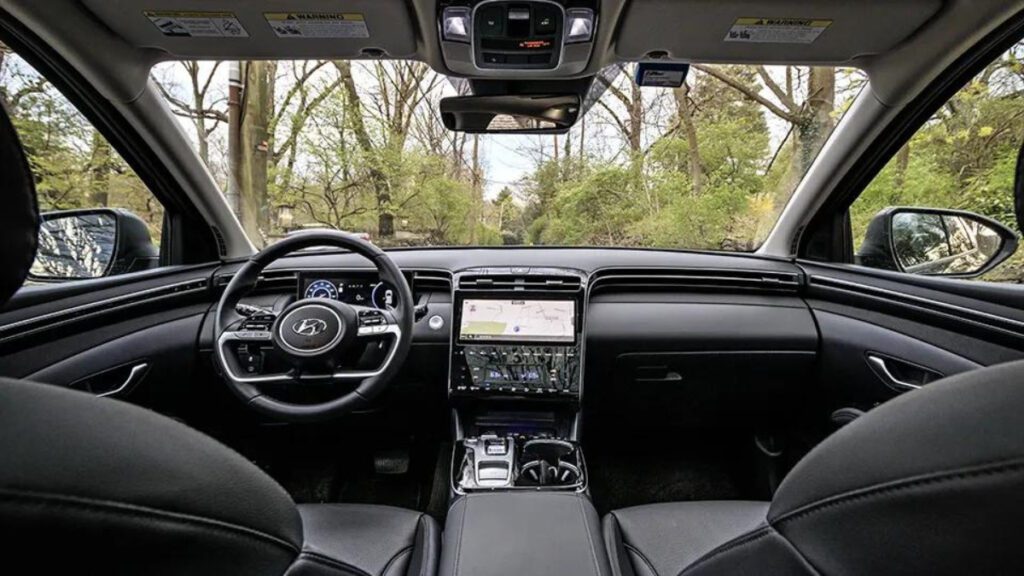
Comfort and Space: Hyundai Tucson
The seats hide that the 2022 Tucson is only 182.3 inches long. Like the TARDIS in Doctor Who, the inside seems much bigger than it is. There is more than enough space for NBA players to be comfortable up front, and 41.3 inches of legroom are in the back. PHEV versions get 0.8 inches less, but that’s still more than much bigger SUVs like the Dodge Durango and Ford Explorer and just a little less than Hyundai’s Palisade and Santa Fe.
Most drivers and passengers will find the Tucson seats pleasant on long travels, even though they are a touch on the stiff side, and the middle seat in the rear isn’t all that enjoyable. Rear seats in limited variants may be heated, and every trim inside is well-polished.
Infotainment: Hyundai Tucson
The Tucson’s base model has a six-speaker stereo system, a twin front USB port setup, and an 8.0-inch touchscreen colour display. The screens on the SEL, Blue, XRT, and N-Line models are similar, but they also include USB ports in the second row and Hyundai’s Blue Link telematics system. A Bose premium audio system, an option on the SEL and Blue, is added to the N-Line. All Tucson models come with wireless Apple CarPlay and Android Auto, although only on models with 8.0-inch screens. Some drivers may prefer the more complex controls on the smaller screen.
The 10.3-inch centre display on limited variants has a modern navigation system and vivid, clear visuals. Android and CarPlay are still available, but you need cords. The absence of tactile controls for various operations in this device, like with the connected Santa Cruz, might be inconvenient when moving quickly.
Higher trims of the Tucson feature a functional and brilliant 10.3-inch digital driver’s display (optional on the SEL and Blue), while lower boundaries have traditional gauges with a 4.2-inch multi-information show. Hybrid vehicles shift by using buttons rather than a handle, which requires some getting used to but is simple.
Storage & Cargo Space:
Tucson performs just as well in the cargo and passenger areas. Compared to the Mazda CX-5 (30.9 and 59.6), the RAV4 (37.5 and 69.8), and the CR-V (39.2 and 75.8), there are 38.7 cubic feet behind the back seats and 74.8 with the seats folded. The Tucson hybrid provides larger cargo room than the CR-V hybrid (33.2 and 68.7) since it loses less cargo space than the standard Tucson (0.1 and 0.3 cubic feet).
The Tucson PHEV’s battery pack reduces cargo space, bringing it down to 31.9 and 66.3 cubic feet, respectively, similar to the Toyota RAV4 Prime. However, this is only marginally less than the non-PHEV hybrid CR-V and almost on par with the RAV4 Prime (33.5 and 63.2). Cubbies abound, and little item storage is excellent in all versions.
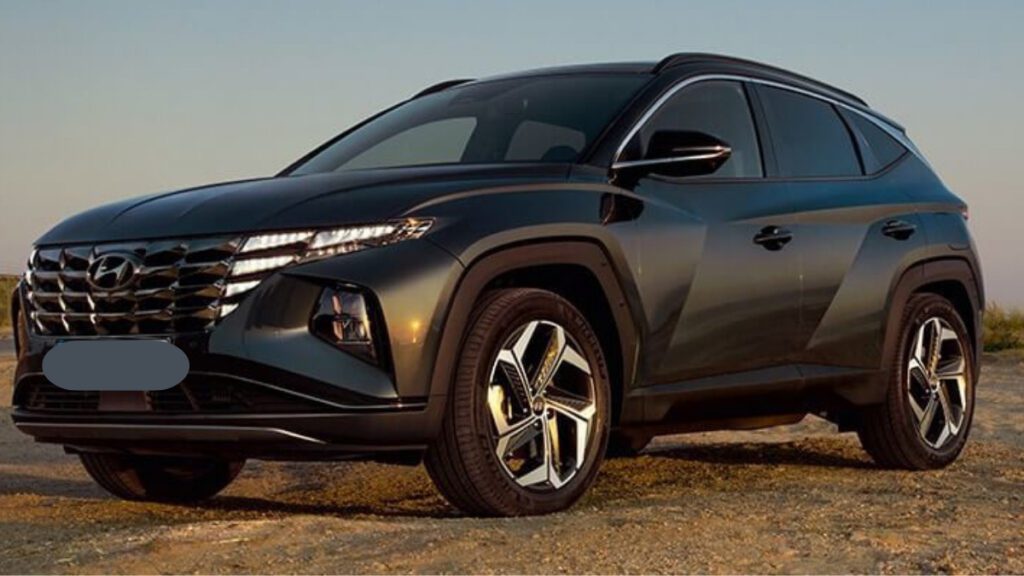
Design:: Hyundai Tucson
Love it or hate it, the Tucson can’t be mistaken for anything else on the road owing to its assortment of trapezoids and wedge forms. The Santa Cruz, a pickup truck, is the only vehicle that shares the Tucson’s daytime running light arrays, which are its most distinguishing feature and are visible from miles away. Although not scary, the styling is assertive, and the lines give this little crossover the appearance of being more substantial than it is.
Even if the basic model is a little sparse, a mature, spotless interior also makes it seem more costly than the actual price, and that’s no negative thing. Although less fingerprint-collecting piano black would be preferable, we can’t find many faults with this sensible, attractive cabin.
Is it Worth It to Buy the 2022 Hyundai Tucson?
Every 2022 Tucson has a lot going for it, but the stock engine isn’t potent, and the base SE model, which costs $27,045 plus a $1,245 delivery fee, doesn’t have many options. Getting the SEL ($28,345) makes more sense, but the Blue Hybrid ($30,995) is more fun to drive, gets much better gas mileage, and comes with AWD as standard. Over five years, the savings on gas will compensate for the price difference, and the extra speed will make driving more fun.
The SEL’s $2,600 comfort package includes a digital instrument panel, wireless charging, a hands-free door, ambient lighting, and Hyundai’s digital key. Still, it also increases the price to $30,945 before fees or markups. With the hybrid engine, the $33,595 SEL Convenience hybrid has even more options, and this seems to be the best deal overall. The N-Line and XRT look good, but there isn’t much difference between them.
The Limited cars have a lot of nice extras, like Highway Driving Assist, but they start at $36,545 for the slower 2.5-litre engine and have a lot of nice amenities. The PHEV’s excellent all-electric range qualifies for a $6,253 federal tax credit. However, the PHEV is at the high end of Tucson’s price range.
What does insurance for a 2022 Hyundai Tucson cost?
The Tucson is a little more expensive to cover than its competitors, but not by much. Based on our research, the average rate for the SEL Convenience for a 30-year-old woman with a good driving record is $1,838 per year. The Honda CR-V would cost $1,759, the Mazda CX-5 would cost $1,697, and the Toyota RAV4 would cost $1,679.
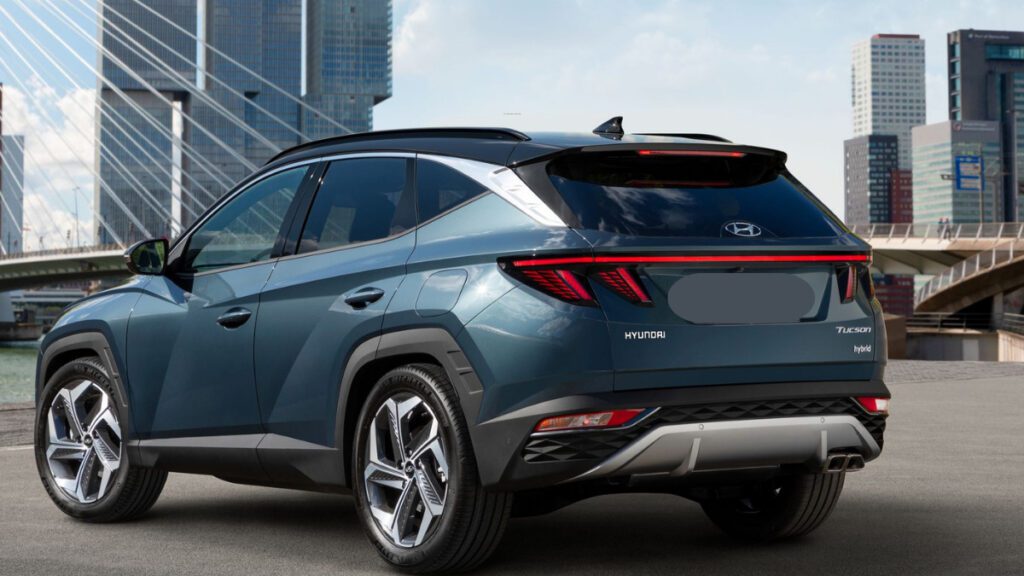
Our Verdict
The 2022 Hyundai Tucson is all-new, and the Korean car has brought its best to the small crossover market. With its sharp lines, the new Tucson stands out in a segment where usefulness is more important than style but doesn’t skimp on looks. The headroom in the back seats is excellent, there are a lot of active safety features, and there is more space for cargo than in the Toyota RAV4. There are now regular gas, hybrid, and plug-in hybrid choices and a performance-themed model called N-Line, which is more for show than for go. The best part is that most trims start at under $35,000.




